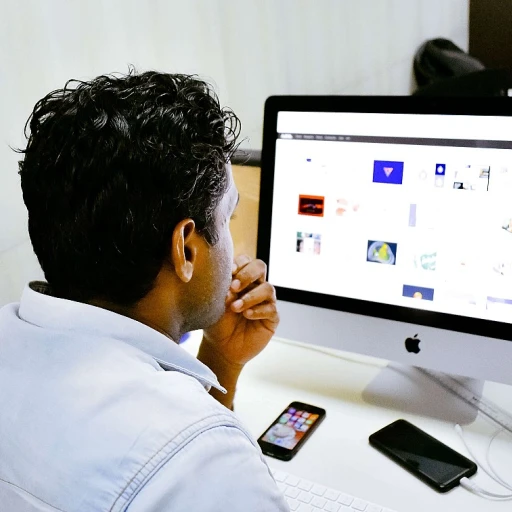
Understanding the role of typography in logo design
The Foundation of Visual Identity
Typography is more than just selecting a font; it is the backbone of a logo’s visual identity. The way letters are shaped, spaced, and arranged communicates a brand’s personality before a single word is read. In logo design, typography serves as a silent ambassador, instantly conveying tone, style, and values. Whether a logo uses bold sans-serifs for a modern look or elegant serifs for a classic touch, the typographic choices set the stage for how a brand is perceived.
Why Typography Matters in Logo Design
Every detail in typographic logo design—from the curve of a letter to the weight of a stroke—affects how audiences connect with a brand. A well-chosen typeface can make a logo memorable, trustworthy, and distinctive. On the other hand, poor typographic decisions can lead to confusion or even misinterpretation of the brand’s message. This is why understanding the role of typography is crucial for anyone aiming to create a unique visual identity.
- Brand recognition: Consistent and thoughtful typography helps audiences instantly identify a brand.
- Emotional connection: The style of lettering can evoke specific feelings, from excitement to reliability.
- Clarity and professionalism: Clear, well-crafted typography signals attention to detail and professionalism.
As you explore the nuances of logo design, consider how typography interacts with other elements, such as color and shape. The right combination can elevate a logo from ordinary to iconic. For those seeking tools to experiment with typographic design, there are superior alternatives to basic design software that offer more flexibility and creative control.
Choosing the right typeface for a logo
Key Criteria for Typeface Selection
Choosing the right typeface is a pivotal step in logo design. The typeface you select must align with the brand’s core values and the message you want to convey. A logo’s typography is not just about aesthetics; it’s about creating a visual identity that resonates with your audience and stands out in a crowded market. The right font can communicate professionalism, creativity, or even playfulness, depending on your objectives.
- Brand Personality: Consider whether the typeface reflects the brand’s personality. For instance, a serif font often suggests tradition and reliability, while a sans-serif font can communicate modernity and simplicity.
- Industry Relevance: Analyze what is common in your sector. Some industries favor bold, geometric fonts, while others lean toward elegant scripts or minimalist styles.
- Scalability: The typeface must remain legible and impactful at all sizes, from business cards to billboards.
- Versatility: Opt for a font that works across different media and backgrounds. Test your logo in black and white as well as color to ensure consistency.
Typeface and Visual Identity
Typography is a fundamental part of a brand’s visual identity. When selecting a typeface, think about how it will integrate with other visual elements, such as icons or color palettes. The harmony between these components is essential for a cohesive and memorable logo. For a deeper dive into how logos contribute to brand identity, you can explore the power of logos in brand identity.
Testing and Feedback
Before finalizing your choice, test the typeface in various contexts. Gather feedback from stakeholders or potential users to ensure the font evokes the intended emotions and remains clear. This process helps avoid common pitfalls, such as choosing a trendy font that quickly becomes outdated or one that sacrifices readability for style.
Balancing creativity and legibility
Finding the Sweet Spot Between Expression and Clarity
When designing a logo, one of the most challenging aspects is achieving the right balance between creativity and legibility. Typography is not just about selecting a beautiful font; it’s about ensuring that the brand’s message is instantly recognizable and easy to read, even at a glance. This balance is crucial for building a strong visual identity that stands out in a crowded marketplace.
- Creativity allows you to infuse personality and uniqueness into the logo, helping the brand make a memorable impression.
- Legibility ensures that the logo communicates clearly, regardless of size or application, from business cards to billboards.
It’s tempting to push the boundaries with custom typography or intricate letterforms, but overcomplicating the design can harm readability. For example, excessive stylization or tight letter spacing may look visually interesting, but it can make the logo difficult to decipher, especially in smaller formats or digital environments.
To maintain this balance, consider these practical steps:
- Test your logo at various sizes and on different backgrounds to ensure it remains clear and impactful.
- Limit the number of typefaces and avoid overly decorative fonts unless they serve a clear purpose.
- Prioritize contrast and spacing to enhance readability without sacrificing style.
Remember, the goal is to create a logo that is both distinctive and functional. A well-balanced typographic logo not only captures attention but also supports a seamless user experience. For more insights on optimizing design for usability, check out this resource on enhancing user experience with UX audits.
Emotional impact of typographic choices
How Typography Shapes Brand Perception
Typography is more than just a visual element in logo design; it has a direct influence on how a brand is perceived emotionally. The choice of typeface, weight, spacing, and even the smallest details in letterforms can evoke specific feelings and associations. For instance, a bold sans-serif font often communicates strength and modernity, while a delicate script might suggest elegance or creativity. These subtle cues help audiences form an immediate connection with the brand, even before they read the name or understand the product part being offered.
Translating Values into Visual Language
Every brand has a unique set of values and personality traits it wants to express. Typography acts as a bridge, translating these abstract qualities into a visual language. For example, a playful, rounded typeface can make a brand feel approachable and friendly, while a geometric, minimalist font might convey precision and innovation. The emotional impact of typographic choices is especially critical in logo design, where first impressions matter and visual identity must be instantly recognizable.
- Serif fonts often evoke tradition, reliability, and authority.
- Sans-serif fonts are associated with modernity, simplicity, and clarity.
- Script fonts can suggest creativity, luxury, or personalization.
Consistency and Emotional Resonance
Consistency in typographic choices across all brand touchpoints reinforces emotional resonance. When the typography in a logo aligns with the rest of the visual identity, it strengthens trust and recognition. This is why choosing between custom typography and standard fonts is not just a technical decision but an emotional one as well. Custom typography can be tailored to amplify specific brand emotions, while standard fonts may offer familiarity and accessibility.
Ultimately, the emotional impact of typography in logo design is about creating a visual shorthand for what the brand stands for. Thoughtful typographic choices help ensure that the logo not only looks good but also feels right to its intended audience, supporting a unique and memorable identity.
Custom typography versus standard fonts
When to Consider Custom Lettering
Custom typography in logo design is a powerful way to create a truly distinctive visual identity. Unlike standard fonts, which are widely available and often used across various brands, custom lettering allows for a unique expression that can be tailored to the brand’s personality and values. This approach is especially valuable when a company wants to stand out in a crowded market or when its vision cannot be fully captured by existing typefaces.
Advantages of Custom Typography
- Brand Uniqueness: Custom typography ensures that the logo is one-of-a-kind, making it harder for competitors to imitate.
- Alignment with Brand Values: Designers can infuse subtle cues—such as curves, angles, or spacing—that reflect the brand’s ethos and story.
- Flexibility: Custom solutions allow for greater adaptability across different media and sizes, ensuring consistency in every application.
When Standard Fonts Make Sense
Standard fonts, when chosen thoughtfully, can also be effective. They offer reliability, proven legibility, and often faster turnaround times. For startups or smaller businesses with limited resources, using a well-selected standard font can still result in a professional and memorable logo. The key is to avoid overused or generic typefaces and instead look for fonts that align with the brand’s character and visual goals.
Key Considerations for Choosing Between Custom and Standard
- Budget: Custom typography typically requires more time and expertise, which can increase costs.
- Timeline: If a project needs to be completed quickly, standard fonts may be more practical.
- Brand Positioning: Premium or luxury brands often benefit from the exclusivity of custom lettering, while established standard fonts can work well for brands seeking familiarity and trust.
Ultimately, the decision between custom typography and standard fonts should be guided by the brand’s unique needs, the desired emotional impact, and the overall design strategy. Both options have their place in logo design, and the best choice is the one that supports a strong, memorable identity.
Common mistakes to avoid in typographic logo design
Frequent Pitfalls in Logo Typography
When working on logo design, even experienced designers can fall into common traps that undermine the effectiveness of their visual identity. Recognizing these mistakes is essential for creating a logo that stands out and communicates clearly.
- Overcomplicating the Typeface: Using overly decorative or complex fonts can make a logo hard to read, especially at smaller sizes. Simplicity often leads to stronger brand recognition.
- Ignoring Scalability: A logo must remain legible and impactful across various formats, from business cards to billboards. If the typography loses clarity when resized, the design fails its purpose.
- Poor Contrast: Choosing colors or weights that don’t provide enough contrast between the text and background can make the logo difficult to distinguish. Always test your design in different contexts to ensure visibility.
- Neglecting Brand Consistency: The typeface should align with the brand’s personality and values. Using a font that clashes with the brand message can confuse the audience and weaken the identity.
- Relying Solely on Trends: While it’s tempting to follow current design trends, prioritizing them over timelessness can quickly date your logo. Balance modern appeal with enduring qualities.
- Spacing Issues: Incorrect kerning and leading can disrupt the harmony of the logo. Proper spacing ensures that each letter is readable and the overall design feels balanced.
By being mindful of these pitfalls, designers can create logos that are both visually appealing and functionally effective. Thoughtful attention to typographic details is key to building a memorable and professional brand identity.





-large-teaser.webp)








